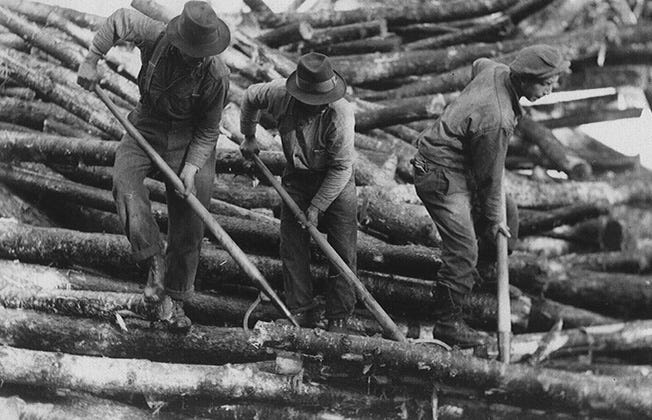
“Inanimate” is defined as something not alive, especially in the manner of animals and humans. A pile of rocks laying in a field or an old piece of farm equipment would meet the classic definition of inanimate. They will likely lay where they are until the winds and waters of time turn them back into the dust they once were. They only move if offered assistance from man, woman, beast or machine. Or in some circumstances the earth rebelling against their presence pushes or shakes them aside.
I am not a collector of antiques, but I have managed to accumulate some interesting and potentially useful old things along the way, almost always items that don’t eat and can be stored in a corner of the barn or shop until needed.
Recently I found a piece of steel protruding from a stone pile at the edge of a field. Probably a remnant of the machine that moved the rocks to the pile. I pulled and prodded and eventually wiggled it loose. Three feet long, two inches wide and a half inch thick. With minor modification it was the right size I needed to repair my old brush hog. A simple and straight forward transaction. An inanimate but useful object appears, is recovered and put back into service. A repair not unlike dozens of others, not much of a story. That’s not saying there haven’t been any repair adventures, not at all. Most involve some sort of foolishness on my part that I don’t care to revisit, like doing a welding job while wearing shorts.

But a handful of inanimate objects will rise to another level. Some years ago, with my interest in accumulating items pretty well established, I took a trip with a group of friends. We had started a tradition of taking a long canoe trip usually around the end of May each year. The selection of the location and the planning of the trip rotated through our group mostly focused on the river country of Wisconsin, Minnesota, and Ontario.
It was my year to plan, and I was excited to do it. Elwood Shannon, an old family friend and guide in Northern Ontario, had told me about a river that he had trapped and hunted on as younger man. He had never run the river after break up, always sledding home over frozen water and ground. He told me that the river had been dammed during logging days. Logs were staged on the ice and when the thaw came the dam was opened and millions of board feet of potential lumber cascaded down the river, herded by the able hands of lumberjacks. Forever etched in the history of the north country.
The river was everything that Elwood had promised. Gin clear waters running cold and clean, every pool stacked with fish. On the third day we paddled quietly during the early misty morning through a little bay. There on the shore was a bull moose indignantly stomping the bullrushes with his huge front hooves. Scenic beauty, quick water, and sharing the land with its permanent residents, a wonderful adventure.
A couple of days later we made an error. Thankfully not fatal. We were paddling a stretch that had many formidable rapids and we were forced to portage several times. The bush was thick, and the mosquitoes and black flies were hungry. Towards the end of the day, tired and ready for camp, we decided to run the next set of rapids without scouting. As we rounded a sharp river bend the wall of whitewater that met us was a truly amazing sight. It sucked us in and spit us out the other side, like so much kindling.
We recovered most of our gear and all our crew and set up camp on a huge flat rock at a calm water stretch where a breeze blew strong enough to keep the bugs at bay. I was walking along the shore and looked down into the water and saw an inanimate object of interest. It was the remains of a tool that James Peavy invented in 1858, a logging peavy. In its heyday it would have been outfitted with a stout hardwood handle about five and a half feet long. A thick spike protruded from the end and a hinged hook was attached to the head by a square bolt and nut. A lumber jack would sink the spike into the end of the log and use the hook to swing the log into place.
I fished it out of the water. The handle was gone, but the head was in good enough shape that with a new handle could be put back to work. Pretty impressive for a tool well over a hundred years old. As I examined the old tool, it began to talk to me. As I held it in my hands, it told me a story of the lumberjack who once wielded it.

He was surely strong and tough as boot leather, hands hard and callused from a life of rough work. Most likely, a long way from home working through the winter, he was here to take the crosscut saw to the giant white pine. Then with a combination of horse and manpower the logs were rolled onto frozen water. Each log end branded by the crew who felled it. When the spring thaw came and the river let loose, the logs charged down river in strong current. Then with his peavy, he would walk along the bobbing logs to make sure those under his watch stayed in line and prevented a deadly log jam. I couldn’t help but ask myself, What about his life off the river? Did he have a girl back home? Was he married with a family? It was common for experienced hands to sign on for the winter and spring and take their wages home to their home and work farm ground until winter came again.
It was equally as common for a lumberjack to complete the job take his pay and head to town. Any number of entertainments were waiting there to separate him from his hard-earned money. Would my lumberjack be the guy who slams his glass on the bar for another round, falls temporarily in love, and wakes with pilfered pockets? The starter or finisher of a barroom brawl? Impossible to know, the only thing left that speaks for his life now resides in my shop.
I have decided to find a new handle, five feet long and stout enough to apply Archimedes principle with meaning. Eventually the new handle will break, the head set aside, for later repair. Maybe forgotten until the next scrounger comes upon it and turns it over in his or her hands. I wonder what it will tell them about me.

